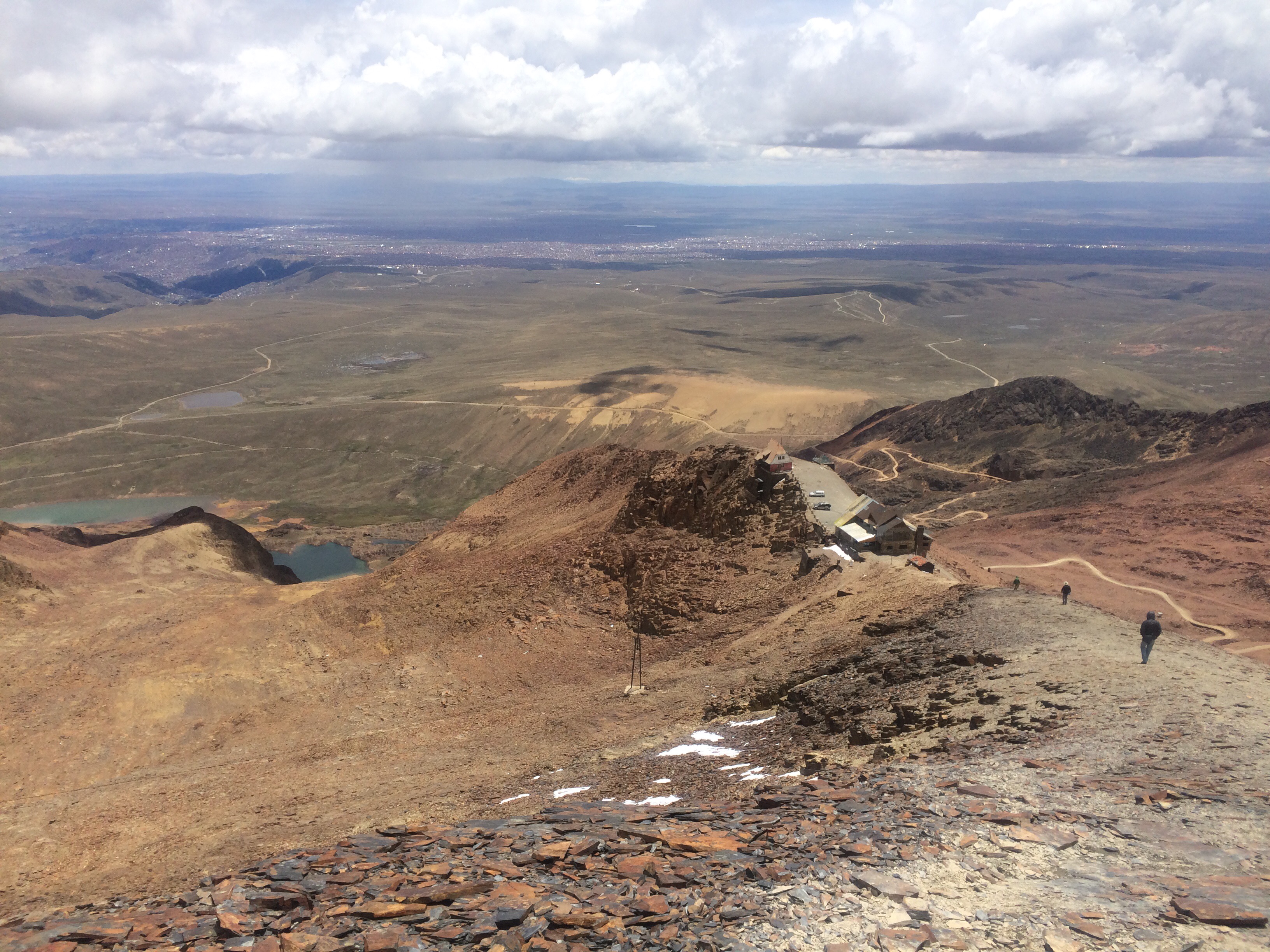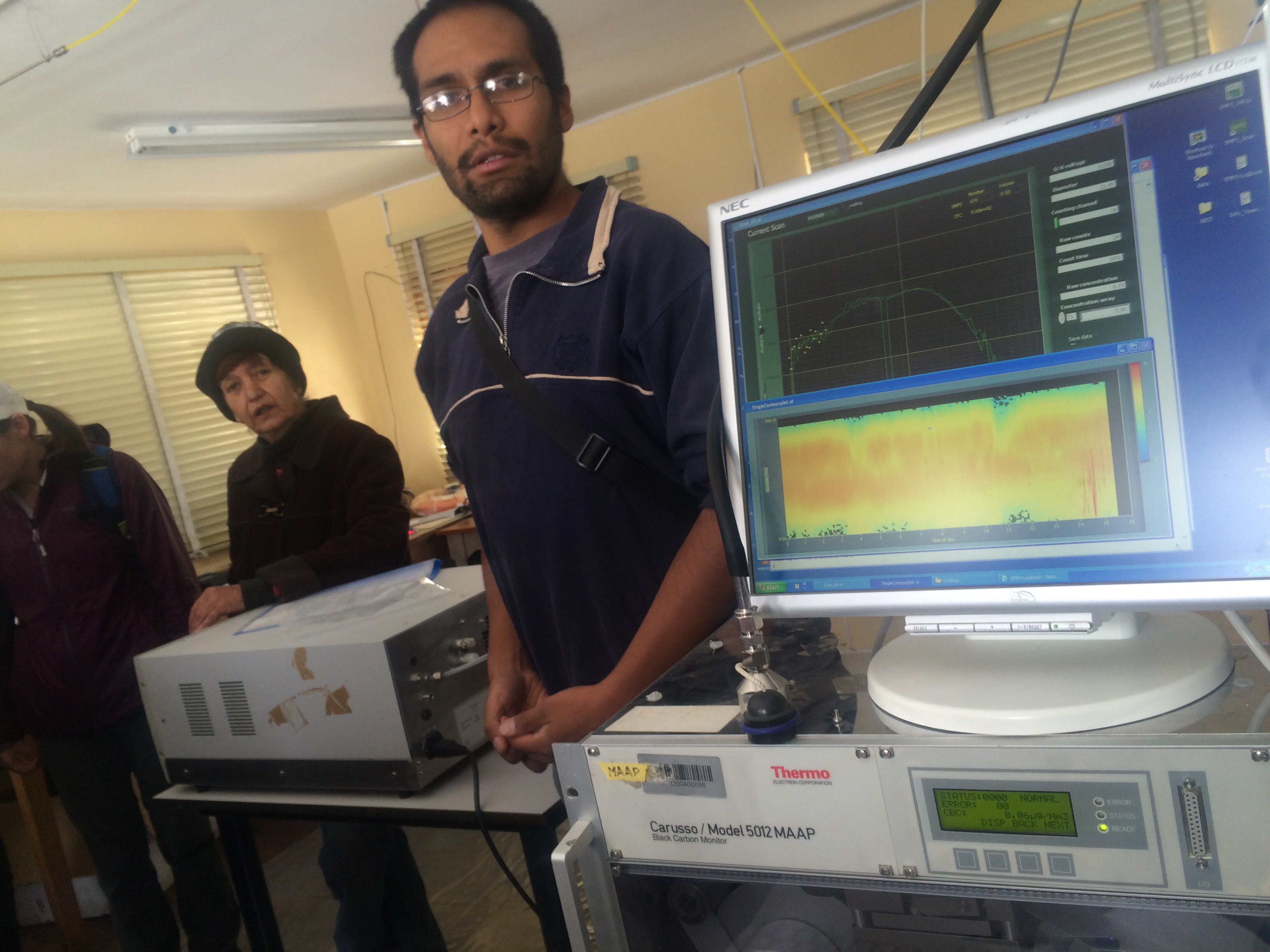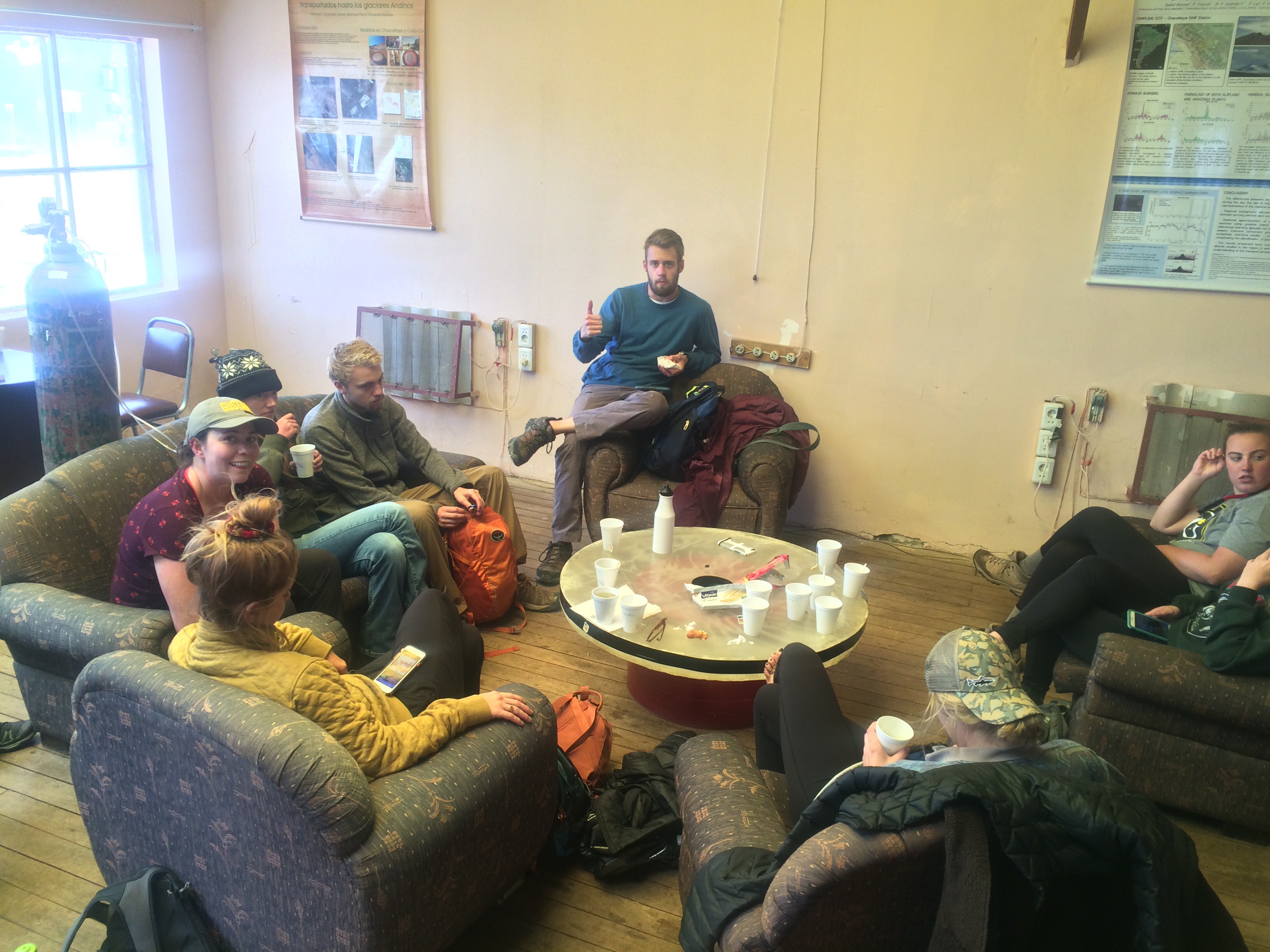17-01-18

The view from near the top of the ski run, looking down to the ski lodges. Lake Titicaca in the distance.
Our guide this time was Manuel Roca, a graduate student studying atmospheric physics at the Universidad Mayor de San Andres in La Paz, in a lab run by a friend of Sonia’s. He was very friendly, helpful, and knowledgeable of both the science and the facility, welcoming us in to the heated base and showing us the complicated equipment that automatically records concentrations of greenhouse gases (carbon dioxide, methane, others), particulates (e.g. soot), cosmic particles, and UV radiation, among other things. All this was set up to be accessed remotely, so the scientists would only need to visit the station once or twice a week. We also could crash in their assembly room and have some lunch and hot tea there.

Manuel explains instrumentation sensitive enough to show a spike in particulates when our bus arrived
But the real reason we made the treacherous journey up to Chacaltaya was to see the glacier. Or rather, to see where it used to be, for Chacaltaya glacier is completely gone now, a victim of changing climate and increased soot pollution. The climate change led to less snowfall in the winter, and the soot darkened the surface of the glacier (reducing its albedo) allowing it to absorb more heat and melt. Now the former ski slope is just a steep rocky slope with the remains of the ski lift cables and towers trudging across it. The two club houses are boarded up and falling apart, and the only people making the journey up there are the scientists (still drawn by the thin atmosphere) and the curious. We climbed up to the top of the ski run, to the ruins of the ski lift, and got a fabulous view of the city of La Paz spilling out of its valley into El Alto, and farther out the shimmer of Lake Titicaca.
In the other direction was Huayna Potosi, another glacier-topped mountain, this one with the remnants of a glacier still on it. Like Chacaltaya a decade ago, Huayna is melting fast. Manuel estimated it would last another 5-10 years before it, too, was just a memory, another victim of climate change. At the moment the meltwater from Huayna Potosi feeds villages (and La Paz) downstream from it, as well as providing electricity through a number of hydropower plants. These will disappear with the glacier.
We set a new elevation record while there: the top of the ski lift hill was at 5580 meters, or 17,160 feet.
